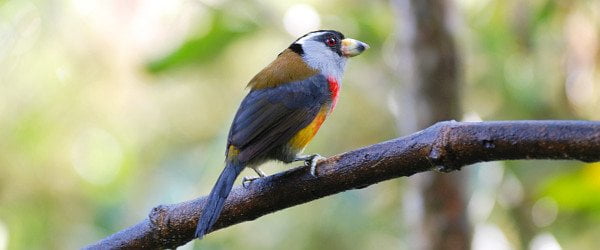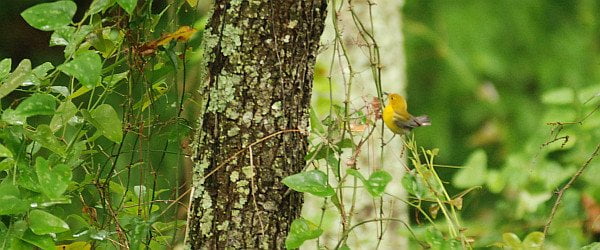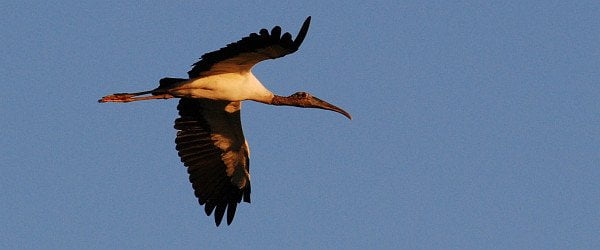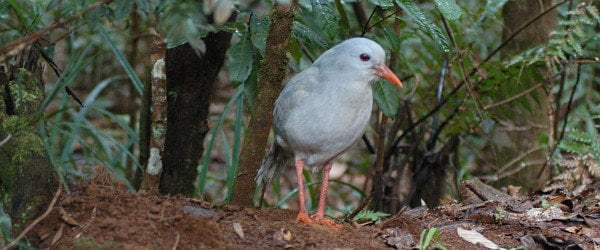Year-end lists! Woo! What follows is my attempt to highlight 10 significant changes in world bird taxonomy proposed or formalized in 2010. As you might imagine, a full list of changes from all the world’s authorities would number in the hundreds, so choosing 10 was a somewhat arbitrary exercise, but I hope you’ll find this stimulating and informative. Let me know what you’d add to this list in the comments, and why. Without further ado, here we go!
10. Three-way split of Winter Wren complex
This year, the American Ornithologists’ Union and the IOC world bird list split the Winter Wren (Troglodytes troglodytes) into three species: Pacific Wren (T. pacificus), Winter Wren (T. hiemalis), and Eurasian Wren (Troglodytes troglodytes). Genetic work identified these three clades, and subsequent research found that in North America, Pacific and Winter wrens do not interbreed in a small overlap zone. In other words, two reproductively isolated biological species had existed under our noses practically unnoticed until the last couple of years.
David Sibley has put together draft range maps and identification notes for the two North American species, and the always excellent Nick Sly has a review of the literature.
Apparently, the ancestor of this complex spread itself across the Holarctic (the only wren to do so) and subsequently diversified into the three species recognized today. Some scientists have argued that the Pacific Wren diversified first and that Eurasian Wren and Winter Wren maintained contact for awhile before being divided by geologic events, but the AOU remains unconvinced that this can be demonstrated given current data.
9. Restructuring of New World barbets and toucans
The AOU and IOC have split the toucans and New World barbets into three families (from one) to recognize the distinctiveness of toucans and the basal position of Semnornis barbets relative to the toucans and all other New World barbets. The resulting families are as follows:
- Semnornithidae (Semnornis barbets)
- Capitonidae (Eubucco and Capito barbets)
- Ramphastidae (Toucans and aracaris)

Toucan Barbet (Semnornis ramphastinus) at Refugio Paz de las Aves, Ecuador. © David J. Ringer
8. Recognition of African warbler family Macrosphenidae
In October, the IOC put several African passerines (including the stub-tailed crombecs and the odd Rockrunner) into a new family called Macrosphenidae. This is further fallout from the dramatic breakup of the Old World Warbler complex, which (along with the old babbler family) contained a hodgepodge of unrelated sylvioid lineages for many decades. Macrosphenidae apparently lies outside the core Sylvioidea (swallows, bulbuls, and many warbler and babbler families), but its position and precise composition are not yet clear. Don Roberson has a good African warblers family page with photographs and more information on this group.
7. Recognition of new family for longspurs and snow buntings
Acting nearly a decade’s worth of data, the AOU North American Checklist Committee created a new family, Calcariidae, for the longspurs and snow buntings. Sequence data show that this clade, rather than being embedded in the Emberizidae, is likely sister to all of the New World nine-primaried oscines (blackbirds, parulid warblers, emberizid sparrows and buntings, cardinals and relatives, and tanagers)! The Clements list will follow suit this year, and the IOC list had made a similar move in 2009.
Bonus: McCown’s Longspur is sister to the snow buntings, not the other longspurs, and so it is moved into the monotypic genus Rhynchophanes.
6. Discomposure of wood-warbler (Parulidae) genera
The AOU 51st supplement made a few changes to wood warbler genera: Most former Vermivora warblers were moved to the genus Oreothlypis and the waterthrushes were separated from the Ovenbird into Parkesia. But a paper published later this year indicates that many more changes are needed. Dendroica contains American Redstart and two parulas, which are currently classified in separate genera. Geothlypis (yellowthroats) contains Kentucky Warbler, Mourning Warbler, and McGillivray’s Warbler, which are currently placed in Oporornis. And so on. Then there are the ever-puzzling outliers like Yellow-breasted Chat and Wrenthrush. I don’t have time or space for a full analysis here, and besides, Nick Sly and John Boyd both published very thorough analyses, sometimes taking different positions on questions the study leaves open. The picture is becoming clearer. Checklist committees will have their hands full sorting through all of this, and in the end, we will see familiar genus names disappear. But we’ll understand the warblers better!

A female Prothonotary Warbler on Dauphin Island, Alabama. © David J. Ringer
5. Breakup of babbler family, Timaliidae
DNA sequencing studies have begun to send cracks of light through the jumbled, disorderly heap that was the babblers (Timaliidae). This year, the IOC tackled the problem by tentatively splitting the complex into five families:
- Timaliidae (Babblers)
- Pellorneidae (Fulvettas, ground babblers)
- Leiothrichidae (Laughingthrushes)
- Sylviidae (Sylviid babblers)
- Zosteropidae (White-eyes)
Some non-babbler lineages, including the Pnoepyga wren-babblers were discovered and removed in the process. These five babbler clades are likely to stand, though their composition will change as more species are studied. Last month, I covered the babbler breakup in some detail, so flop on over to What is a babbler? for more.
4. Discovery that Cinnamon Ibon is a “forest canopy sparrow”
The Cinnamon Ibon (Hypocryptadius cinnamomeus) is a Philippine bird once placed in the white-eye family, Zosteropidae. It differs from members of that family in a number of characters and was often considered misplaced, but as far as I know, no one had guessed at its true affinities until a paper published this year announced, “The Cinnamon Ibon Hypocryptadius cinnamomeus is a forest canopy sparrow” (Fjeldså et al. 2010). The authors use genetic and morphological data to place the Cinnamon Ibon basally within Passeridae, the family that contains Old World sparrows, including the House Sparrow (Passer domesticus). This is remarkable for a number of reasons, not the least of which is that no member of the Passeridae was previously known to have crossed Wallace’s line in Indonesia or reached the Philippines on its own. (In recent times, of course, humans have spread House Sparrows and Eurasian Tree Sparrows all over the globe.) Of course, some bird groups that failed to cross Wallace’s line did reach the Philippines (trogons, woodpeckers, and nuthatches to name three), so something in the biogeography allowed this pattern to occur multiple times — and now the Cinnamon Ibon is known as one more example. Don Roberson argues that it should be elevated to full family status on his Hypocryptadiidae family page. Undoubtedly, a few more surprises like this await, especially, perhaps, in the jungles of the Indonesian and Philippine islands.
3. Uniting of Kagu and Sunbittern in new order Eurypygiformes
The odd and distinctive Kagu of New Caledonia and Sunbittern of the Neotropics were traditionally placed in the order Gruiformes, which tended to collect birds of uncertain affinities. There is now general agreement that these two poorly known, weak fliers are each others’ closest relatives and must represent a Gondwanan lineage. In other words, they became separated as the continents split apart (New Caledonia is an ancient fragment of Gondwana). Interestingly, both species have colorful patterns on the flight feathers of their wings, which they use in displays.
A wild Kagu (Rhynochetos jubatus) at Parc Provincial de la Rivière Bleue, New Caledonia. © David J. Ringer
2. Breakup and rearrangement of “Ciconiiformes” and “Pelecaniformes”
As recently as 2007, most major checklists grouped a wide variety of birds including storks, herons, tropicbirds, frigatebirds, cormorants, and pelicans into two orders:
- Ciconiiformes*
- Ciconiidae (Storks)
- Threskiornithidae (Ibises and spoonbills)
- Ardeidae (Herons, bitterns, and egrets)
- Scopidae (Hamerkop)
- Balaenicipitidae (Shoebill)
- Pelecaniformes
- Phaethontidae (Tropicbirds)
- Fregatidae (Frigatebirds)
- Pelecanidae (Pelicans)
- Sulidae (Boobies and gannets)
- Phalacrocoracidae (Shags and cormorants)
- Anhingidae (Darters and Anhinga)
(*Note: By 2008, most authorities had rejected the notion that “New World” vultures (Cathartidae) belong in Ciconiiformes. Today they are placed basally in Accipitriformes.)
This year, the AOU, the IOC, and Clements all acted on the last few years’ worth of accumulating evidence that the traditional classification scheme did not accurately represent relationships. Perhaps most significantly, the tropicbirds are found to be far removed from the other totipalmate birds (birds with four webbed toes) including pelicans and frigatebirds, but their new position is uncertain. Other changes summarized below. For an in depth discussion of the situation, see the AOU 2009-C proposals.
- Phaethontiformes
- Phaethontidae (Tropicbirds)
- Ciconiiformes
- Ciconiidae (Storks)
- Pelecaniformes
- Threskiornithidae (Ibises and spoonbills)
- Ardeidae (Herons, bitterns, and egrets)
- Scopidae (Hamerkop)
- Balaenicipitidae (Shoebill)
- Pelecanidae (Pelicans)
- Suliformes
- Fregatidae (Frigatebirds)
- Sulidae (Boobies and gannets)
- Phalacrocoracidae (Shags and cormorants)
- Anhingidae (Darters and Anhinga)

Wood Stork in Warren County, Mississippi. © David J. Ringer
1. “Discovery” of Western Ground Parrot
The Western Ground Parrot (Pezoporus flaviventris) of western Australia was described in 1911, lumped in 1912, and then in 2010 became one of the rarest birds in the world with the publication of a paper suggesting that, based on apparent long isolation from eastern populations, the bird may in fact deserve species status. The result is based on mitochondrial DNA divergence. From the paper’s abstract: “The magnitude of divergence between eastern and western lineages is similar to a wide range of avian congeners. Our data support the need to reconsider the intraspecific taxonomy of ground parrots, and we cautiously suggest the recognition of Western Ground Parrots as a species, P. flaviventris, for conservation prioritization, planning and management purposes. Given their recent precipitous decline to approximately 110 individuals, most of which occur at one location, this makes Western Ground Parrots one of the world’s most threatened bird species.” (Murphy et al. 2010)
What’s next?
What changes do you think we’ll see in 2011? And since we haven’t left 2010 behind just yet, what would you add to my list?














Awesome post! I’ll have to think about some good runners-up for this list.
The placement of the Kagu and Sunbittern in a newly recognized Order was one of those radical taxonomic developments that made a lot of people go…duh, right. I guess we can’t joke about the Gruiform grab bag quite so much anymore.